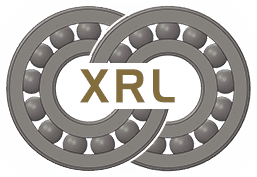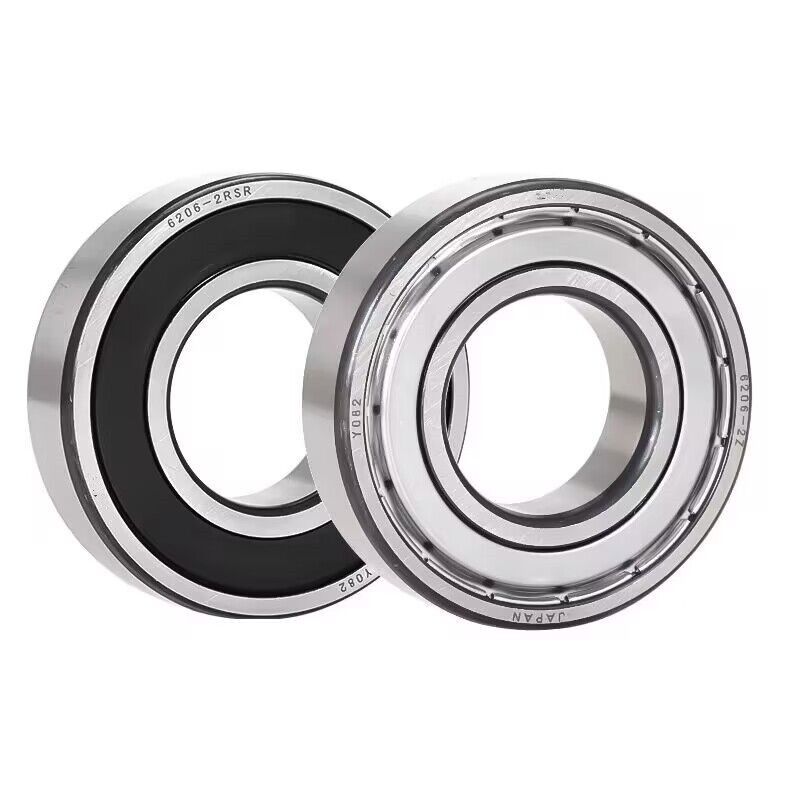The environment in which motor bearings are installed. Bearings should be installed in a dry, dust-free room as much as possible, and away from metal processing or other equipment that generates metal debris and dust. When bearings must be installed in an unprotected environment (as is often the case with larger motor bearings), appropriate measures must be taken to protect the bearings and associated components from contamination such as dust or moisture until the installation is complete. Bearing Preparation Since the bearings have been rust-proofed and packaged, do not open the package until installation. In addition, the anti-rust oil coated on the bearings has good lubrication properties. For general-purpose bearings or bearings filled with grease, they can be used directly without cleaning. However, for instrument bearings or bearings used for high-speed rotation, clean cleaning oil should be used to wash away the anti-rust oil. At this time, the bearing is prone to rust and cannot be left for a long time. Preparation of installation tools. The tools used during installation should be mainly made of wood or light metal products. Avoid using other things that can easily produce debris; the tools should be kept clean. Inspection of the shaft and housing: Clean the shaft and housing to confirm that there are no scratches or burrs left by machining. If there are any, use a whetstone or fine sandpaper to remove them. There must be no abrasives (SiC, Al2O3, etc.), molding sand, chips, etc. inside the casing.
Secondly, check whether the size, shape and processing quality of the shaft and housing are consistent with the drawings. As shown in Figure 1 and Figure 2, measure the shaft diameter and housing bore diameter at several points. Also carefully check the fillet size of the bearing and housing and the verticality of the shoulder. In order to make the bearings easier to assemble and reduce collisions, before installing the bearings, mechanical oil should be applied to each mating surface of the inspected shaft and housing. Classification of bearing installation methods The installation methods of bearings vary depending on the bearing type and matching conditions. Since most of the shafts rotate, the inner ring and outer ring can adopt interference fit and clearance fit respectively. When the outer ring rotates, the outer ring adopts interference fit. The bearing installation methods when using interference fit can be mainly divided into the following types, as shown in the figure below. …The most common method… is to cool the bearing using dry ice, etc., and then install it.
At this time, the moisture in the air will condense on the bearing, so appropriate anti-rust measures need to be taken. The outer ring has an interference fit and is installed by pressing and cold shrinking. It is suitable for NMB micro-small bearing hot sleeves with small interference. Installation… Suitable for bearings with large interference or interference fit of large bearing inner rings. Tapered bore bearings are installed on tapered shafts using sleeves. Cylindrical bore bearings are installed. Press-in installation. Press-in installation generally uses a press. It can also be installed. Use bolts and nuts, or use a hand hammer to install as a last resort. When the bearing has an interference fit for the inner ring and is installed on the shaft, pressure needs to be applied to the inner ring of the bearing; when the bearing has an interference fit for the outer ring and is installed on the casing, pressure needs to be applied to the outer ring of the bearing; when the inner and outer rings of the bearing When the rings are all interference fits, backing plates should be used to ensure that pressure can be exerted on the inner and outer rings of the bearing at the same time.
Hot sleeve installation: The hot sleeve method of heating the bearing to expand it before installing it on the shaft can prevent the bearing from unnecessary external force and complete the installation operation in a short time. There are two main heating methods: oil bath heating and electric induction heating. The advantages of electric induction heating: 1) Clean and pollution-free; 2) Timing and constant temperature; 3) Simple operation. After the bearing is heated to the desired temperature (below 120°C), take the bearing out and quickly put it on the shaft. The bearing will shrink as it cools. Sometimes there will be a gap between the shaft shoulder and the bearing end face. Therefore, tools need to be used to remove the bearing. The bearing is pressed toward the shaft shoulder.
When installing the outer ring to the bearing housing using an interference fit, for small bearings, the outer ring can be pressed in at room temperature. When the interference is large, the bearing box is heated or the outer ring is cooled to press in. When dry ice or other coolants are used, moisture in the air will condense on the bearings, and corresponding anti-rust measures must be taken. For bearings with dust caps or sealing rings, since the prefilled grease or sealing ring material has certain temperature limitations, the heating temperature must not exceed 80°C, and oil bath heating cannot be used. When heating the bearing, make sure that the bearing is heated evenly and no local overheating occurs.
Post time: Nov-22-2023

